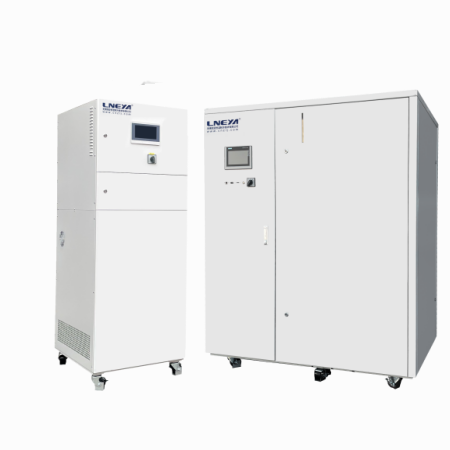News

実験室用脱イオン水冷却器の選び方は?
Pure water usually refers to water that has been treated to remove impurities, ions, organic matter, etc. Common examples include distilled water, reverse osmosis water, and deionized water. Deionized water has low conductivity due to the removal of ions through ion exchange resin. But different applications have different purity requirements, for example, laboratory analysis may require higher purity, while industrial cooling may have less stringent requirements. Users may need ...
詳細を見る
液体を100℃に加熱し、30℃に冷却する温度制御システム
In terms of heating methods, common ones include steam heating, thermal oil heating, etc. Steam heating may require boilers, suitable for factories with steam supply; Thermal oil is suitable for high temperatures and requires uniform heating. Cooling methods may include water cooling, air cooling, refrigeration units, etc. High water cooling efficiency, but requires a stable water source; Air cooling is suitable for situations with low ambient temperatures; Refrigera...
詳細を見る
なぜ電気会社は冷却システム産業用冷凍機を必要とするのか?
When electrical equipment is operating outdoors, it may encounter high temperature environments. For example, in direct sunlight in the summer, the temperature may be very high. If the equipment overheats, it will affect performance or even damage. At this time, the chiller can cool down and keep the equipment running stably. High-power equipment, such as transformers, inverters or generators, these equipment will generate a lot of heat during operation. If the heat cannot be dissipated...
詳細を見る
製薬工場向け原子炉冷却加熱システム
1.Process requirements: 2.Media compatibility: 3.Temperature range: 4.Cleanliness requirements: 5.Space and maintenance: In summary, the cooling and heating system of the reaction kettle is crucial in the pharmaceutical process, ensuring precise control of reaction conditions, improving efficiency, ensuring product quality and safety, and adapting to diverse production needs. Choos...
詳細を見る
熱偏向温度計用チラー
Temperature range: The temperature of the cooling water is usually required to be between 6 ℃ and 18 ℃.Temperature difference requirement: The temperature difference of the cooling water should be controlled within 0 ℃ or ± 0.5 ℃ to ensure precise control of the mold temperature. Choosing the appropriate chiller is the key to ensuring cooling effectiveness. The cooling capacity of a chiller is related to the injection volume of the injection molding mac...
詳細を見る
触媒材料の製造工程における冷却装置の役割
In the field of new material preparation, by accurately controlling the reaction temperature, the influence of different temperatures on the microstructure and macroscopic properties of materials can be explored, thereby developing new materials with better performance and more comprehensive functions. For example, in the process of synthesizing high-performance polymers, nanomaterials, etc., the heating and temperature control system of the reaction kettle can ensure that the reactio...
詳細を見る新エネルギー電池の出力限界試験用チラーユニット
Temperature control and heat dissipation: Batteries generate a large amount of heat during high load operation. Excessive temperature not only affects the performance of the battery, but also shortens its service life. The chiller provides a stable cooling water flow to help the battery dissipate heat in a timely manner, ensuring that the temperature of the battery is maintained within a suitable range during operation. Simulate real working conditions: Ne...
詳細を見る化学材料の製造工程のための低温冷却のスリラー
1. Temperature sensitive reactions control many chemical reactions that are highly sensitive to temperature, especially in the synthesis of polymer materials, pharmaceutical intermediates, and other fine chemicals. Low temperature can suppress the occurrence of side reactions, ensuring the selectivity and yield of the main reaction pathway. 2.Thermistor materials protect certain chemical materials from easily decomposing or deteriorating at high tempe...
詳細を見る LNEYA工業用冷凍機 メーカー サプライヤー
LNEYA工業用冷凍機 メーカー サプライヤー












